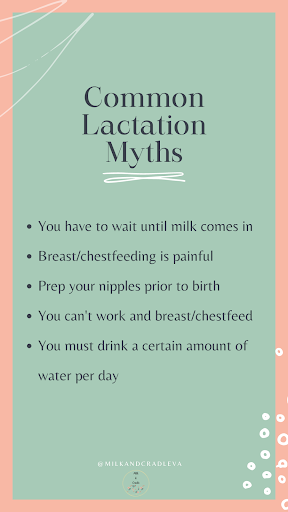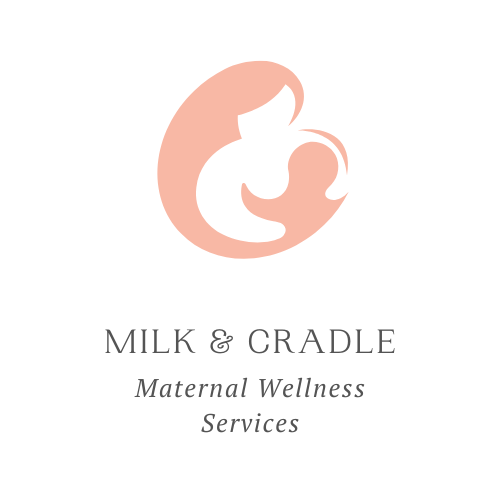
Common Lactation Myths
Any of these sounds familiar? This post will help you to learn why these are myths and what you should do instead.
You must wait until milk comes in:
Colostrum is produced within the breasts as early as 14-16 weeks gestation. Colostrum is early milk and exactly what your infant needs at birth. It’s volume is small but it packs a mighty punch in providing your baby with immunity and nutritional goodness. With on demand feeding and frequent attempts at latching, your infant will consume colostrum in a very subtle manner. You may hand express colostrum into a spoon or syringe in order to feed a sleepy baby in the beginning days or if latching needs improvements. It is important for your baby to get early colostrum since the volume and composition of your milk will begin to transition around day 3 after birth.
Breast/Chestfeeding is painful:
When you experience that first latch, it may be uncomfortable. Uncomfortable and painful are not to be used the same when describing your level of comfort. A comfortable and optimal latch is described as feeling like a “tugging” feeling. There should be no pinching, toe curling pain whatsoever. If you have ever heard that breastfeeding is painful from a friend or family member, they likely could have used support in their lactation journey to ensure a proper latch and to rule out oral restrictions.
Prep your nipples prior to birth:
You may be told by friends and family members to prep your nipples prior to giving birth so that they can be “toughened up”. There is absolutely no need to scratch or use any abrasive materials on your nipples to prep them for breastfeeding. This act is unfortunately causing skin and nipple trauma and in fact will be worsening any nipple pain you initially feel in your early breastfeeding journey. Your baby is born to nurse at the breast. Your breasts and your body will be biologically prepared to do what naturally is to be done. Babies feed on the breast tissue, and not just the nipple. If there is any pain, consult a lactation professional.
You can’t work and breast/chestfeed:
Returning to work is not the end of your lactation journey. You can still provide your baby your expressed milk with the use of a breast pump. Technology has made pumping on the go so much more convenient than previous years. With the help of a good breast pump and a pumping schedule while away from your baby, you can continue to provide human milk for all of your baby’s nutritional needs. If you work long hours or find times that you can’t pump, hand expression is literally a milk saver!
You must drink a certain amount of water per day for milk supply:
Hydration is important. Our bodies, even when we aren’t lactating, work best when we are hydrated. Being told that you have to drink a gallon of water per day, for example, is a very common myth that holds no evidence in research. Water intake helps your body to complete the task of milk making, but the milk itself is not produced from the water consumed. It is also sometimes believed that you have to drink milk to make milk. Think about that for a sec, does a cow drink the milk of another animal to make the milk that is collected for human consumption? No, cows eat what is nutritionally appropriate for their bodies to produce optimally. Your overall nutrition is more important than your water intake when producing human milk.






